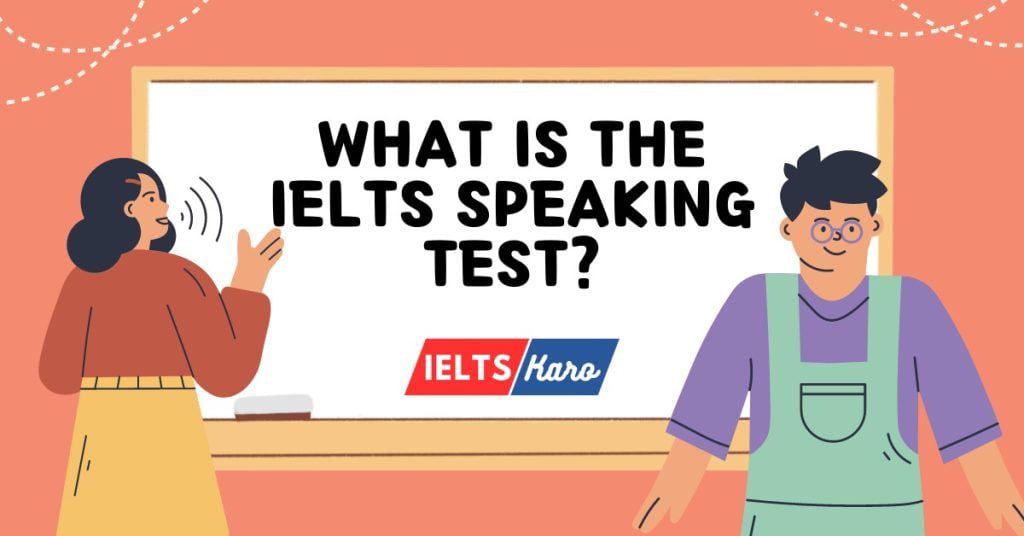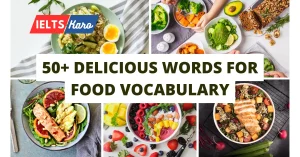The IELTS Speaking test is a 15-minute, timed test for all IELTS candidates. Whether you’re appearing for Academic or the General Training (GT) IELTS, the speaking test’s marking criteria, band score, and the type of questions asked, will be no different.
Many of our students get nervous knowing as if it is some sort of an interview. Instead, we always tell them, and will advise you too, to think of it as having a conversation with a stranger who wants to KNOW more about YOU!
You should rather feel excited that there is someone waiting for me, ready to listen for up to 15 minutes.
If you change your mindset, you would actually ENJOY appearing for the speaking test, rather than feeling puzzled.
So what exactly is the IELTS speaking test, and what is the marking criteria? Let’s understand it a bit more.
IELTS Speaking TEST Details
- Your IELTS Speaking test could be in person, with the examiner sitting before you, or via a Zoom/Google meet video call. Don’t worry, in the case of latter, you will be provided with a pair of noise-cancelling headphone. Regardless of the type, you still have to appear for the test at the IDP/British Council exam center.
- The Speaking test can be on the same day, sometimes before, but mostly after the LRW (Listening, Reading, and Writing) test. So let’s suppose if your IELTS LRW starts at 10 AM, it will end at no later than 12:40 PM, and your speaking test may begin at 01:00 PM or at 05:00 PM.
- The test DOES NOT test your expertise or knowledge of the subject, ONLY your confidence, body language, and pronunciation.
- Your accent does NOT matter. You do NOT need to make up an Australian, American or a British accent.
- The Speaking test is purely informal. So you can use informal style of language (don’t use slangs like gonna, wanna, please!!)
- The test comprises of 3 parts.
- Part 1 is about YOU. A few brief and generic questions such as “What do you do”, “Do you work, or do you study?”, “What do you like to eat?”
- Part 2 is a cue card where you will have 1 minute to prepare on the topic, and up to 2 minutes to speak.
- Part 3 is a short discussion on the cue card you just spoke about in Part 2.
- The examiner will be in total control of the time.
Here is the marking criteria for Speaking:
- Fluency and Cohesion
- Vocabulary
- Grammar
- Pronunciation
Each one of the criterion carries 25% marks. You can see for yourself that you will NOT be marked for your knowledge, accent or the clothes you wear.
5 Essential Speaking Tips
It is important for you to follow these tips to improve your band score in speaking:
- Better to practice regularly for 10 to 15 minutes on a daily basis, than spending hours in the last few days leading up to your IELTS test. Remember, consistency is everything, NOT frequency!
- You can always request the examiner to repeat the question if you have a hard time in understanding it in one go.
- Simple “Yes” and “No” answers are NOT going to cut it. Also, by repeating the question yourself, you are actually making it difficult for yourself and the examiner. Give some explanation and details to justify your answer.
- Do not repeat the same ideas as it will not help you in passing with a high band score.
- You are tested on your confidence, body language, pronunciation and fluency, NOT your knowledge. There is no such thing as a right or wrong answer. Give the answer and provide an explanation to justify it.
Speaking Part 1
Part 1 is all about YOU, YOURSELF and a bit about YOUR life. Be confident, and do not shy in answering the questions. Here are some of the most common types of questions you can get fir the 1st part:
- Alright, do you work or study?
- Let’s talk about cooking. Do you like to cook?
- What do you like to eat the most?
- Where do you live and what type of jobs do people do in your city?
- Do you live in an apartment or a house?
Read more: IELTS Speaking Part 1 topics
Speaking Part 2
The second part is called the Speaking Cue Card. What is a cue card, and what are the types of topics do you get in it? Here are some instructions:
- A cue card is a self-speaking exercise.
- You will be shown a topic with 3 to 4 bullet points to it, similar to the Task 1 Letter.
- You will be given 1 minute to think and prepare for the topic, during which you can also use a pencil and a per to write down your thoughts.
- Once the 1-minute timer is over, the examiner will instruct you to speak on the topic for no less than 1 minute, up to 2 minutes.
- Once the 2-minute timer is up, the examiner will interrupt you by saying “Alright, thank you for speaking. That is the end of the IELTS Speaking Part 2.”
Read more: IELTS Speaking Part 2 Topics and Preparation
Speaking Part 3
The speaking part 3 is a generic discussion on the topic you have spoken about in part 2. This discussion will last about 4-5 minutes, and will be slightly analytical in nature. For example, instead of asking “What do you do” type of questions, the examiner may ask:
“Alright, you have talked about this in part 2, what do you think about this?”
The questions require some thought-process where most of the answers are usually in the future and future continuous form.
Read more: IELTS Speaking Part 3 Topics and Preparation





